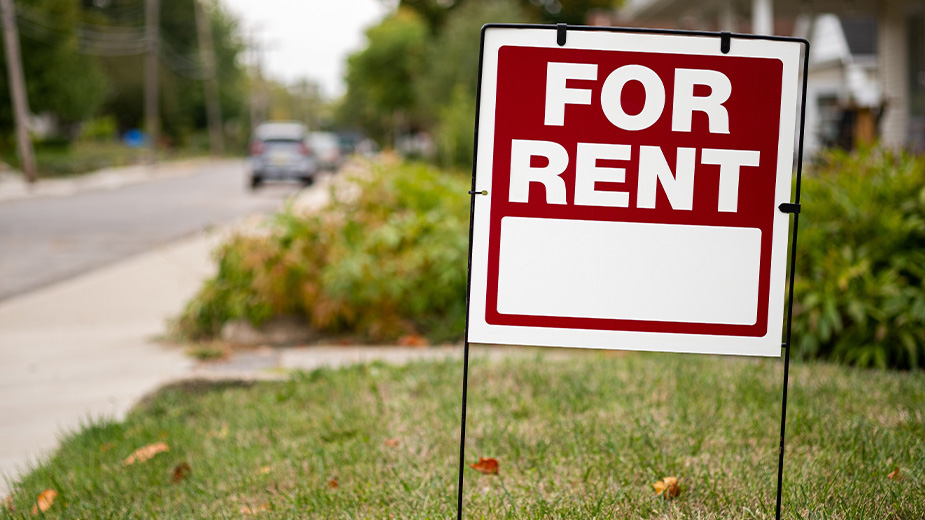Unaffordable Housing Toughest on Ohio’s Lower-Income Communities
By Nadia Ramlagan
Ohio News Connection
Rising housing costs are creating significant challenges for Ohioans seeking affordable homes – especially those with the lowest incomes.
According to the National Low Income Housing Coalition, to afford a two-bedroom home in Ohio without spending more than 30% of your income on rent, you will need an annual household income of $39,702.
Ohio’s median household income was $67,520 in 2022, according to U.S. Census data. But even in a relatively affordable state, households whose incomes are at or below the poverty guideline – $15,225 for a single person under 65 or $29,678 for a family of four – face significant challenges in finding housing they can afford.
In Ohio, 67% of extremely low-income residents – those making just 30% of the area median income – are spending more than half of their income on rent, according to NLIHC.
“Over 700,000 renters are spending over half their income on rent, and when you’re spending that much of your income on rent, there’s very little left over for the other necessities of life – food, transportation, education, health care, childcare. All of those things suffer,” said Marcus Roth, communications/development director with the Coalition of Homelessness and Housing, which advocates for affordable housing.
The 2021 Ohio Housing Needs Assessment states there was a shortage of more than 256,875 affordable rental units for extremely low-income households across the state in 2018. This translated to a meager 44 available units for every 100 of these households.
Considering inflation, the median gross rent in Ohio increased by 9% from $733 to $797 per month from 2012 to 2018. The highest earners’ incomes have outpaced this rise in rent since 2006, but those in the lowest 20 percent of income earners since 2008 have not. They are at heightened risk for housing cost burdens and instability.
“The main thing we need to do is increase the supply of affordable housing,” Roth said. “We have a huge shortage of affordable housing. It’s just grown worse and worse over the last 10 to 15 years.”
The Ohio Housing Finance Agency’s research highlights a significant decline in authorized new housing units – all housing units, not just affordable ones – for construction since 2000. In 2022, only 30,936 housing units were authorized, down from 49,745 in 2000.
“We have not had enough affordable housing for a very, very long time. But one of the novel things about what we’re seeing is that that instability is creeping up the economic ladder,” said Carlie Boos, executive director of the Affordable Housing Alliance of Central Ohio. “And it’s not just minimum wage earners who are feeling the pinch. It’s not just retirees who are feeling the pinch, but now it’s folks who are working 40 hours a week in a very respectable profession.”
Limited housing availability, combined with rising construction costs, has created a shortage of affordable housing options.
“We’re in an atypical moment in history where we are just not building enough homes for all of the people who live here,” Boos said. “We’re getting more and more and more people, especially in central Ohio, where we’re going to grow by another million people in the coming years.”
Boos discussed the housing crisis in Ohio and how it requires a multifaceted approach that includes increasing the supply of affordable housing, providing financial assistance to low-income renters and regulating the rental market.
“There’s a lot of different tools that we can start making work for us. One of the things that I think central Ohio has really been aggressive on … well, it’s housing bonds,” Boos said. Housing bonds are issued by governments at the state and local levels to help raise money for new affordable housing projects.
“Last November, the city of Columbus put a ballot measure up for a vote that passed super-majority-style, with $200 million and new resources to support affordable housing and start to bring those rents and those home ownership costs down,” Boos said. “We had a $50 million pilot before that was overwhelmingly successful. So we know that this is going to have a huge impact.”
Exploring financing methods, such as public-private partnerships and social impact bonds, can further tap into private-sector investments for affordable housing development. These include the Low-Income Housing Tax Credit and the HOME Investment Partnerships Program.
Roth said the most recent Ohio state budget created a state version of the federal Low-Income Housing Tax Credit program.
“It is about $100 million of additional state resources that will go toward the development and rehabilitation of affordable housing. So that is a great first step,” Roth said. “It’ll create 4,000 additional units of affordable housing.”
This collaboration is produced in association with Media in the Public Interest and funded in part by the George Gund Foundation.
Pictured at top: In Ohio, 67% of extremely low-income residents – those making just 30% of the area median income – are spending more than half of their income on rent, according to the National Low Income Housing Coalition. (Adobe Stock)
Published by The Business Journal, Youngstown, Ohio.



